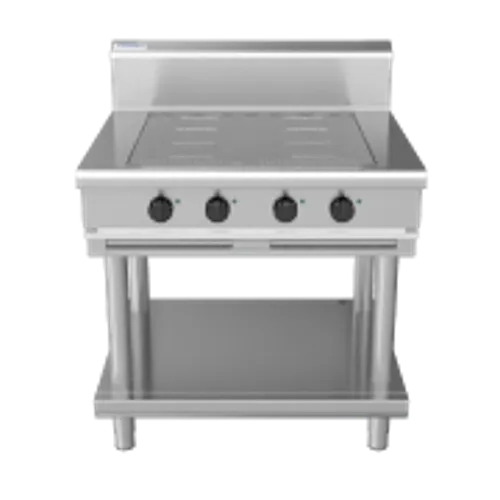When it comes to kitchen appliances, the type of cooktop you choose can have a big impact on cooking efficiency, energy use, and safety. With induction cooktops becoming increasingly popular in both residential and commercial kitchens, many people are asking: How does induction work—and how does it differ from traditional gas or ceramic cooktops? In this post, we break it down simply so you can make the right decision for your kitchen.
🔌 What Is Induction Cooking?
Induction cooking uses electromagnetic energy to heat pots and pans directly—unlike gas or ceramic cooktops, which heat the surface and then transfer that heat to the cookware.
Here’s how it works:
-
Underneath the induction glass surface is a copper coil.
-
When the cooktop is turned on, an alternating electric current flows through the coil, creating a magnetic field.
-
This magnetic field induces an electric current directly in the pot or pan—which then heats up due to resistance.
Key Point:
Induction heats the cookware, not the cooktop surface itself. This means faster, more efficient cooking and reduced risk of burns.
🔥 How Does Gas Cooking Work?
Gas cooktops use an open flame to heat cookware. When you ignite the burner, natural gas or LPG is released and combusted, producing a flame that transfers heat directly to the base of the pan.
Pros of Gas:
-
Instant heat control
-
Visual flame helps with cooking cues
-
Works with any type of cookware
Cons:
-
Less energy-efficient
-
Open flame can be hazardous
-
Harder to clean due to grates and spills
♨️ How Do Ceramic Cooktops Work?
Ceramic cooktops, often called radiant cooktops, have electric heating elements beneath a smooth glass surface. These elements heat up, then radiate heat through the glass to warm your cookware.
Pros of Ceramic:
-
Sleek, modern appearance
-
Easy to wipe clean
-
No open flame
Cons:
-
Slower heat-up and cool-down times
-
Retains heat after use (burn hazard)
-
Less efficient than induction
⚡ Induction vs Gas vs Ceramic: Key Differences
| Feature | Induction | Gas | Ceramic |
|---|---|---|---|
| Heating Method | Magnetic field | Open flame | Electric element |
| Cookware Compatibility | Must be magnetic | Any | Any |
| Energy Efficiency | High (~90%) | Low (~40-55%) | Moderate (~60-70%) |
| Heat Control | Instant, precise | Instant, visual | Slower response |
| Safety | Very safe | Fire and gas hazard | Surface stays hot |
| Cleaning | Easy, flat surface | Harder (grates) | Easy, but hot glass |
🧲 Do You Need Special Cookware for Induction?
Yes—induction requires magnetic cookware. A simple test is to stick a magnet to the bottom of your pan. If it sticks, it’s induction-compatible. Popular compatible materials include:
-
Cast iron
-
Stainless steel (if magnetic)
-
Certain induction-ready aluminum or copper pans
🧑🍳 Which Cooktop Should You Choose?
-
Choose Induction if you want ultra-fast, safe, and energy-efficient cooking.
-
Choose Gas if you’re a traditionalist who values flame cooking and doesn’t mind lower efficiency.
-
Choose Ceramic if you like electric cooking with a smooth aesthetic but aren’t ready for induction.
Final Thoughts
Induction cooking represents a leap forward in technology—offering precision, speed, and safety that outpaces gas and ceramic options. While each cooktop has its place, induction is fast becoming the preferred choice in modern kitchens.










